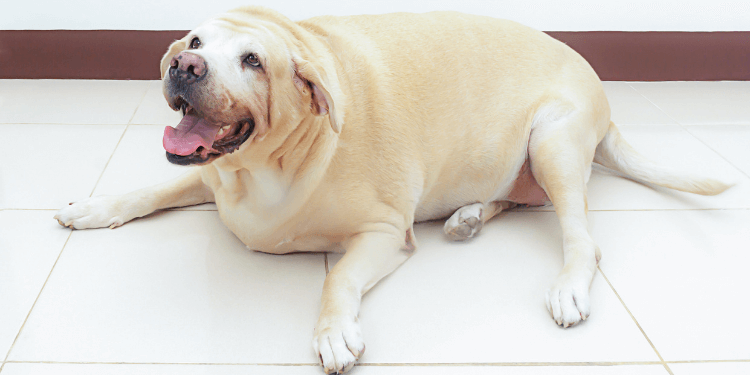It’s no secret that a healthy, balanced diet is one of the best ways for us humans to enjoy longer, happier lives. It’s also no secret that obesity amongst humans in the U.S. is on the rise. Despite being aware of the serious, potentially fatal health risks associated with overeating, poor food choices, and lack of exercise, many of us still tend to ignore what we know is good for us.
So what about our pets? Do we understand the serious health risks obesity poses for them? And even if we understand, can we do for our beloved animals what we so often are unable to do for ourselves?
Sadly, the answer to this is a large “no.” Here are some statistics to help you get educated about the risks of pet obesity, tips on how to tell if your pet is heavier than they should be, and resources to help your pup go from flab to fit.
Shocking Statistics
Statistic #1
Pet obesity affects more than half of all dogs in the U.S.
According to the Association for Pet Obesity Prevention (APOP), 54% of U.S. dogs are overweight. Founded in 2005 by Dr. Ernie Ward, a leader and visionary in the area of pet nutrition and weight loss, APOP is the most trusted resource for pet obesity information. APOP’s latest info tells us that an astounding 35 million of these dogs are considered overweight and 6.7 million are considered clinically obese.
Statistic #2
According to a Purina Lifespan Study, overweight pets live 2 years less that pets who maintain a healthy bodyweight.
Kudos to Nestle Purina PetCare for investing their time and money to show the world another reason why not maintaining an ideal body condition for your dog can have devastating effects on their long-term health. The study took place over 14 years, with 48 dogs that were separated into 2 different groups. Though all of the dogs were fed a nutritionally complete diet, the amount of food they were fed differed between the 2 groups.
The results were astonishing. The study clearly showed that the dogs who maintained their ideal body condition lived a longer and healthier life.
Statistic #3
Not only does obesity cause our beloved pets an earlier death, it also leads to a host of other diseases while they are still with us.
6 Most Common Risk Factors of Overweight pets:
- Osteoarthritis and poor joint health
- Insulin resistance and type 2 diabetes
- Cranial cruciate ligament injury
- Heart and respiratory disease
- Kidney disease
- Cancer
Taking Charge of Your Dog’s Health
So TopDog’s message to American dog owners is this: Enough already! Let’s work together to change this – for ourselves, our children, and of course, our pets.
On a positive note, barring actual disease processes that lead to excess weight in animals, we as pet owners have full control over the food that our dogs consume which means you can start making positive impacts as soon as you want. You can check out our full guide to a healthy weight HERE
Barring actual disease processes that lead to excess weight in animals, we as pet owners have full control over the food that our dogs consume. It’s time to get educated on how we can tip the scales back in our pets’ favor. You can check out our guide here.
Tips to Tell If Your Pet Is Overweight
Here’s a bonus statistic for you: 9 out of 10 owners of overweight pets mistakenly identify their pets’ weight as normal. To start searching for a solution, we first need to recognize there’s a problem. The most fail-safe way to tell if your pet is overweight is to take them to your veterinarian for a diagnosis.
Here are a few simple tips you can do at home to start the inquiry process:
- Are their ribs difficult to detect beneath their fat? Placing your hands on the sides of their chest, you should be able to easily feel their ribs.
- Is their stomach sagging? Just as in humans, this is a pretty clear indication your pet has packed on too many pounds
- Is their back broad and flat? This is another sign they’re too wide on the sides.
- Are they hourglass-shaped? Both dogs and cats should have a nice taper at their waist, between their abdomen, and where their hips go into the socket. If they’re overweight, they’ll be oval-shaped rather than hourglass.
What You Can Do About It
As we always say, education, education, education. The more you know, the better equipped you’ll be as an advocate for your dog’s health. If you suspect your pet is overweight or obese, schedule an appointment with your veterinarian to make a plan for diet and exercise changes.
There is also a wealth of resources online to help you. For more information, you can check out:
Association for Pet Obesity Prevention: http://petobesityprevention.org/
Dr. Ernie Ward: https://www.drernieward.com/
Purina ProPlan: https://www.proplan.com/dogs/dog-care/purinas-landmark-life-span-study-in-dogs/
Now is the time to take a good hard look at your pet’s weight and ask yourself if something needs to be done. If you don’t help them get back to being the healthiest, happiest version of themselves, no one will.











